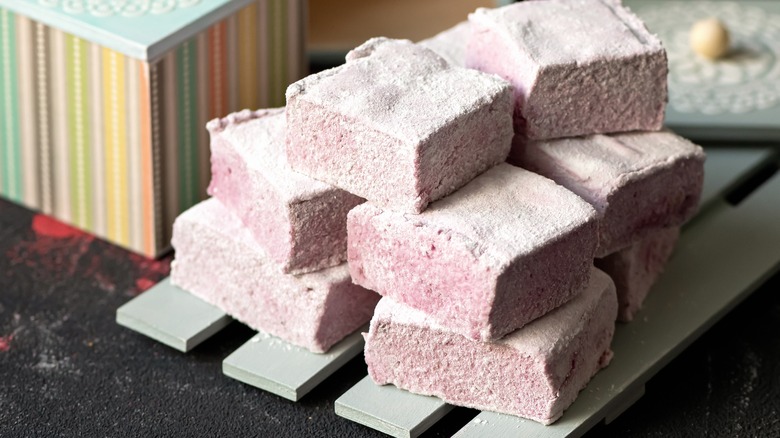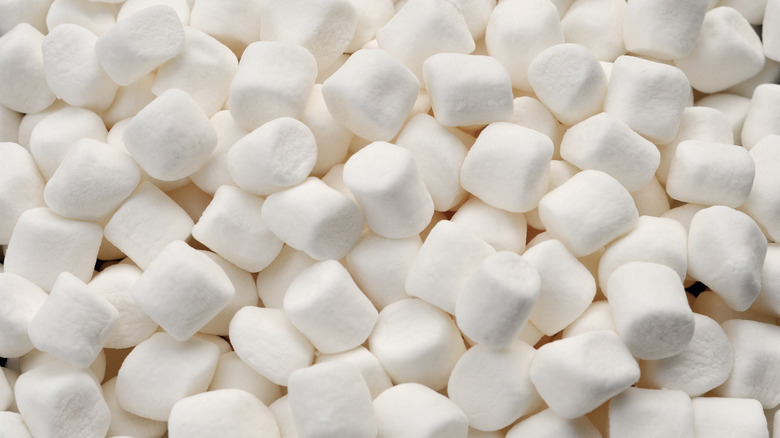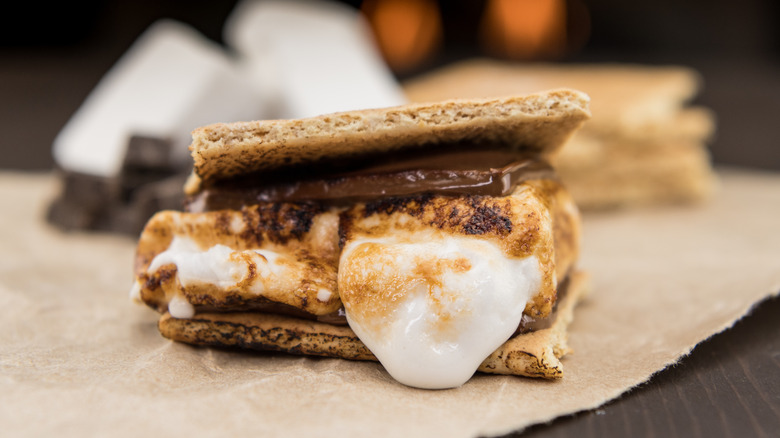Why It's So Hard To Mass Produce Artisanal Marshmallows
While they seem like a thoroughly modern food, marshmallows have been around since ancient times. This sweet confection is now ubiquitous throughout the world, whether being used as a candy filling or playing a significant role in the creation of s'mores, a campfire favorite. The treat has even gone gourmet thanks to the introduction of artisanal marshmallows, a trend that could be partially attributed to entrepreneur Jon Sebastiani.
Sebastiani founded Smashmallow, which aimed to create tastier, healthier marshmallows with fun ingredients like cinnamon and chocolate chips. While the product proved successful, manufacturing these gourmet confections on a larger scale turned out to be nearly impossible.
Commercially made marshmallows are subject to a manufacturing technique called extrusion, which was developed by inventor Alex Doumak in 1948. Extrusion requires specific machinery and devices, which aren't necessarily equipped to handle additional ingredients. As a result, Sebastiani's company was unable to produce Smashmallows at the rate desired, and the business dissolved amidst numerous legal battles.
The science behind marshmallows
For such a fun and whimsical treat, the science behind marshmallows is quite complex. In addition to the corn syrup and sugar that give them their delectable sweetness, gelatin also plays a vital role in their creation. An animal-based product derived from connective tissues, gelatin allows the marshmallow mixture to be infused with air bubbles, which is what gives the food its light, springy texture. Vegan versions replicate this texture with seaweed derivatives and soy protein.
As for the use of two types of sweeteners, this also serves an important scientific purpose. With just sugar in the mix, a marshmallow would be far less elastic since the sugar would convert into crystals. Similarly, using more sugar than corn syrup would also affect the texture.
The often-maligned Circus Peanuts, which rank among the worst things you can hand out to trick-or-treaters, actually contain a higher concentration of sugar as compared to corn syrup, which explains their somewhat challenging texture. Because marshmallows require such a careful combination of ingredients, it can be difficult to tweak the recipe within a mass-production setting. However, the artisanal marshmallow market is still thriving, albeit on a smaller scale.
Did Smashmallow influence the future of marshmallows?
The Smashmallow brand has been officially defunct for a few years now, but its brief success may have initiated a new snack trend. There's a multitude of gourmet marshmallow manufacturers that offer similar products. Flavors include fairy bread, maple cinnamon, lemon meringue, and mint chocolate chip, just to name a few. Additionally, the market for these confections seems to be steadily rising and sales numbers are projected to become even greater in the next few years.
In 2020, North American marshmallow sales amounted to $319.18 million, which is particularly impressive when you consider that the market for the sweet treat grew amidst the pandemic. By 2028, it's estimated that sales will rise to $535.26 million, which could be attributed to consumers' preference for gourmet confections. While customers can no longer indulge in the brand that may have renewed their interest in this treat, rest assured that many gourmet selections on the market are perfect for concocting a sweet and salty snack like a bowl of popcorn with marshmallows.


